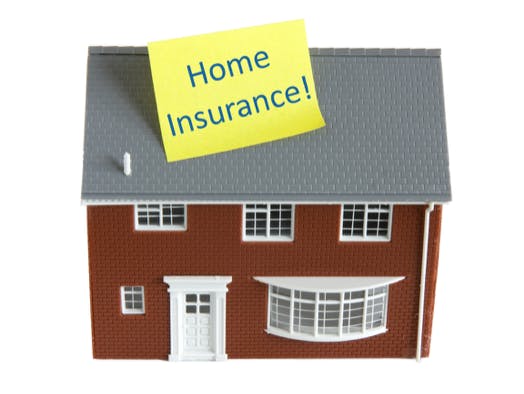Buying a home can be like performing a high-wire act, with the slightest of breeze threatening you to lose balance of the situation. Thank goodness for the safety net below – also known as insurance.
If you’re taking out a mortgage with a loan of 80% or more of the market value, then the lender will require mortgage insurance to protect against loss. What many people don’t know is that the lender will also typically require buyers secure a homeowners policy as part of the loan approval.
It only makes sense. The mortgage company wants to make sure the insurance policy protects the home, essentially the lender’s asset, until the loan is paid off. It’s called CYA, covering your “assets,” for both you and the lender.
The insurance policy generally covers fire, theft and liability. Additional insurance may be required if the home is in a flood-prone area. And there are options to purchase earthquake insurance or to increase liability coverage for, say, pool owners.
Most homeowners policies cover the replacement value of the structure – but what about the home’s contents? Insurance companies offer “actual cash value” and “replacement cost” coverages to pay for lost or damaged personal possessions (also known as “contents”). What’s the difference? Actual cash value coverage would reimburse a policyholder for the depreciated value of your belongings.
Remember that selection of old comic books or the antique doll collection you own? Actual cash coverage costs less for a reason; it will only cover the current value of the collectibles and not necessarily the personal, or intrinsic, value you have for the items.
There are also “market value” and “replacement value” coverages on the structure. If your $400,000 home goes up in flames – heaven forbid – and you are quoted $450,000 to rebuild, market value coverage would only cover the lesser figure. (Think about the cost to remove fire debris from the destroyed home, hiring experts to survey the land and getting building permits. You get the picture.)
Keeping in mind that I am not an insurance expert (not even close!), I would like to share a few tips for buyers shopping for insurance on that new dream home (or for existing homeowners seeking to sharpen their knowledge):
Compare and Contrast
Car, boat or home, a good rule of thumb when making a new and significant purchase is to get three quotes. Your current insurer (say, for auto and renters coverage) may be the best option for a home policy since most insurance companies offer discounts to existing customers and for bundled coverage. And make sure the company you choose has good customer service reviews; after all, you probably will only need to speak with a claims representative – a stressful time that will require a stress-free experience.
Ease of Payment
When examining insurance companies, ask whether you can make your payments online and as an auto-pay feature (saving paper and postage). In addition, lenders seeking to protect the investment typically prefer – or even stipulate – that a buyer pays a year’s worth of insurance as part of closing. Escrow will typically coordinate the payment (either one-time or monthly) but if you have paid for coverage separate of closing, escrow and the lender will want to see proof in the form of the declarations page(s) – listing insurance policy coverages and effective date – and a receipt.
Risk vs. Reward
If your real estate professional, lender or attorney suggest you “get a clue,” he/she isn’t being rude. They are referring to a CLUE (Comprehensive Loss Underwriting Exchange) report, which contains about seven years’ worth of auto and home insurance history on a customer. Insurers use the report to see the types of coverages and claims history of a policyholder and then applies that information to determine a person’s risk level. It’s worth reviewing the report before you call for a quote. A CLUE can be obtained by an individual – free once a year – either online or by calling 866-312-8076. Note: Only a homeowner may legally obtain a CLUE on his/her property (not the prospective buyer).
Quality of Coverage
Did you know there are several levels of insurance coverage on a home? I alluded to types of hazard insurance – but there’s more. For example, there is coverage tailored to people living in co-ops and condos, for older homes (typically actual cash value) and for mobile homes. Pet owner? Trampoline owner? Art collector? Wealthy individual? They all factor into liability coverage. Talk to your insurer about coverage levels, understand the differences and avoid paying for more than you need.
Always follow the advice of your insurance representative (and possibly your real estate attorney) on issues related to insurance. The Insurance Information Institute is also a useful resource.
And keep in mind, while insurance is a critical safety net when owning a home, it is not perfect. (There are holes in that net, after all!) That’s where having a home warranty – a separate service contract to protect you against certain breakdowns in the home – could help further. More on that important topic in the next blog post.




